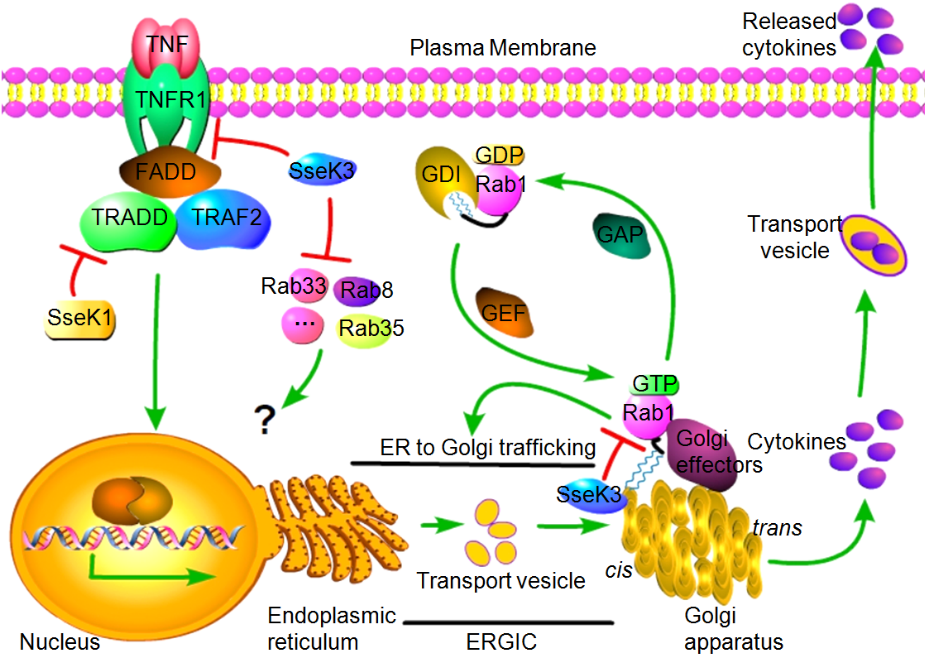Professor Li Shan's team reveals new mechanism of Salmonella infection
Recently, the team of Professor Li Shan from the College of Biomedicine and Health in Huazhong Agricultural University published the research results titled "Arginine GlcNAcylation of Rab small GTPases by the pathogen Salmonella Typhimurium" online in the Communications Biology journal from Nature Publishing Group. The study performed a novel substrate screening and function research of the Salmonella type three secretion system (T3SS) effector protein SseK3, which provided a new target for the development of specific antibacterial drugs.
Salmonella is a gram-negative enteric pathogen that seriously affects human public health. Salmonella uses the T3SS to inject effector proteins directly into host cells to manipulate its biological processes, thereby maintaining the stability of bacteria, escaping the immune clearance of the host cells, and promoting infection.

Figure 1
The researchers monitored the dynamic process of SseK3 localizing to cis-Golgi apparatus during Salmonella infection using Suntag tagging technology, and further found that the Golgi localization of SseK3 was partially dependent on PtdIns(4,5)P2. Next, they identified Rab GTPases as the fire-new substrates of SseK3 during Salmonella infection through Arg-GlcNAc-specific antibody enrichment combined with high-resolution mass spectrometry technology, among which SseK3 showed strongest modification to Rab1. The modification of Rab1 by SseK3 was dependent on the C-terminal prenylation of Rab1 rather than the GDP or GTP-bound form of Rab1. MS/MS analysis revealed that Rab1 has four arginine GlcNAcylation modification sites (R72/R74/R82/R111). GlcNAcylation modification seriously disturbed Rab1 function, blocked the binding of Rab1 to GDI protein, disrupted the cycle balance of Rab1 between cytoplasm and cell membrane, and inhibited the host cell ER-to-Golgi trafficking process. More importantly, the arginine GlcNAc transferase activity of SseK3 is crucial for Salmonella replication in RAW264.7 macrophages and bacterial virulence in Salmonella infection mouse models. This study found a new strategy for Salmonella to act on the host cell vesicle transport system, providing a new target for the development of specific bacteriostatic drugs.
Professor Li Shan is the corresponding author of this article, Dr. Meng Kun of Taihe Hospital in Shiyan, postgraduate student Zhuang Xiaohui and doctoral student Peng Ting of Huazhong Agricultural University are the co-first authors of this article.